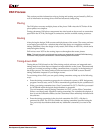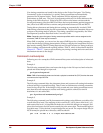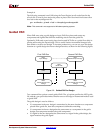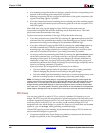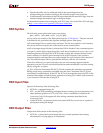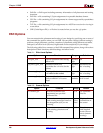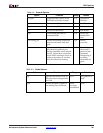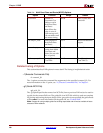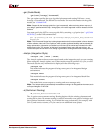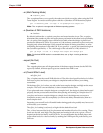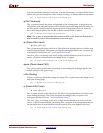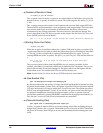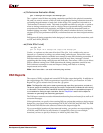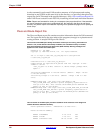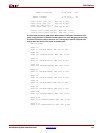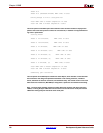
Development System Reference Guide www.xilinx.com 169
PAR Options
R
–gm (Guide Mode)
–gm {exact | leverage | incremental}
The –gm option specifies the type of guided placement and routing PAR uses—exact,
leverage, or incremental. The default is exact mode. For more information on the guide
modes, see “Guided PAR”.
Note:
Support for the leverage guide flow (–gm incremental), without a timing-driven map run of
your design, specified with the map –timing option, will not be supported in future releases of Xilinx
software.
You must specify the NCD to use as a guide file by entering a –gf option (see “–gf (Guide
NCD File)”) on the PAR command line.
par -gf previous_run.ncd -gm leverage design_ncd place_and_routed.ncd
design.pcf
Note: The Incremental Design flow is being deprecated and will not be available in future releases
of Xilinx software. New in 8.2i are Partitions, which provide significant flexibility and functionality for
design preservation. Information on Partitions can be found in the online help included in the 8.2i
software and in the “TCL chapter” of this book. Incremental Design using the map and par -gm
incremental option will still work in 8.2i, though it generates a warning that this flow is being removed.
–intstyle (Integration Style)
–intstyle {ise | xflow | silent}
The –intstyle option reduces screen output based on the integration style you are running.
When using the –intstyle option, one of three modes must be specified: ise, xflow, or silent.
The mode sets the way information is displayed in the following ways:
–intstyle ise
This mode indicates the program is being run as part of an integrated design
environment.
–intstyle xflow
This mode indicates the program is being run as part of an integrated batch flow.
–intstyle silent
This mode limits screen output to warning and error messages only.
Note:
The -intstyle option is automatically invoked when running in an integrated environment, such
as Project Navigator or XFLOW.
–k (Re-Entrant Routing)
–k previous_NCD.ncd reentrant.ncd
The –k option runs re-entrant routing. Routing begins with the existing placement and
routing left in place. Re-entrant routing is useful to manually route parts of a design and
then continue automatic routing, if you halted the route prematurely (for example, with
Ctrl+C) and want to resume, or if you want to run additional route passes.



